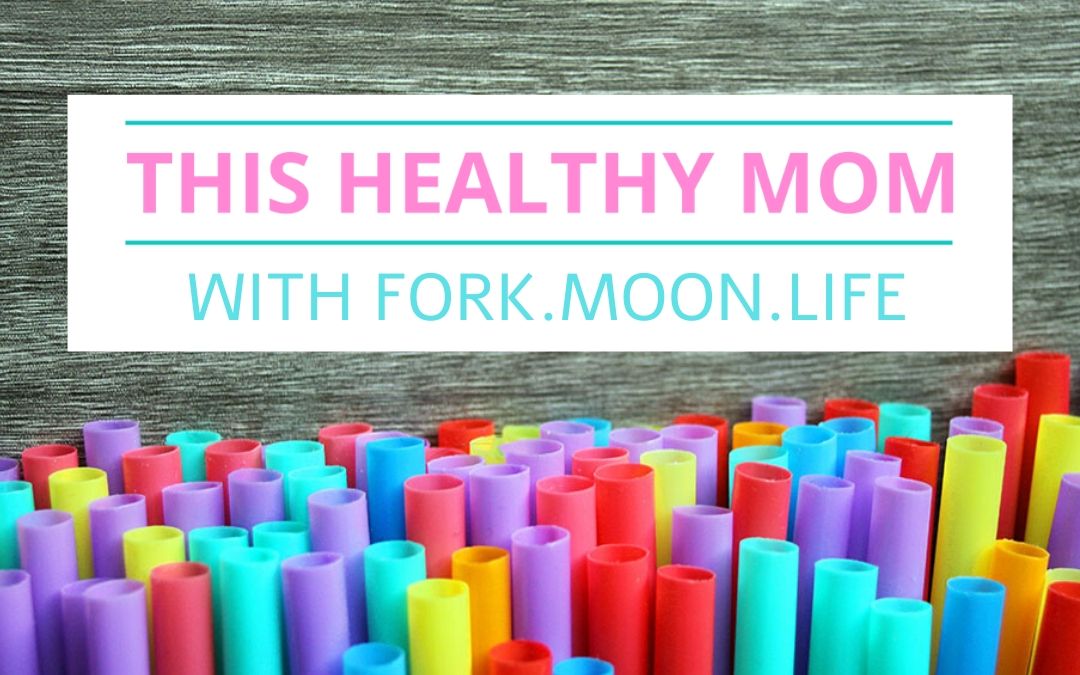Single-use plastics, a term that has become a dirty word, refers to disposable plastics that are used once and tossed. The main culprits are grocery bags, food containers, straws, water bottles, cups and cutlery. Because of the composition of plastics, they do not degrade and according to 4Ocean a plastic straw would take 200 years to decompose. Because most plastics are not recycled properly and do not decompose, they are ending up in our oceans and sea creatures are either ingesting plastics or getting tangled in them ultimately ending in the animal dying.

The biggest issue that directly affects families are the plastic chemicals leaching into our food and ultimately into our bodies. In 2018, the American Academy of Pediatrics advised parents not to put children’s plastic dishes in the dishwasher because the heat from the dishwasher expels the harmful chemicals in the dishes and then into the food your kids are eating.
Plastics contain dangerous substances such as bisphenol A (BPA), phthalates and styrene. Even BPA-free products contain alternative bisphenols (such as bisphenol S, F and B) and other substitutes that are just as harmful. The chemicals that make up plastics are endocrine (hormone) disruptors and those chemicals can wreak havoc on our hormonal systems. At certain doses these chemicals can cause cancerous tumors, birth defects and other developmental disorders.
So what do we do? I reached out to, Registered Holistic Nutritionist (RHN) and Founder of Fork.Moon.Life, a Vancouver eco-friendly sustainable products company, to get her five easy steps to reduce single-use plastics and a few more tips on what we can do at home.
Five Easy Steps to Reduce Single-use Plastics
Q. What are five easy steps for reducing single-use plastics at home and in your lunch bag?
A. There are plenty of reasons to start a zero waste or low impact lifestyle, reducing your carbon footprint and helping to eliminate single-use disposable items. Once you figure out your ‘why’ for doing so, starting the process can often feel overwhelming and intimidating, even judgmental at times. People often have the fear that trying to go zero waste is expensive and you have to purchase all new items. With a few small adjustments, a low impact or zero waste lifestyle is possible! Just remember, start where you are, use what you have and do what you can. Here are five easy ways to reduce single-use plastic around your home:
1. Grab a reusable water bottle
Think of how much money you spend on buying bottled water – and how much money and plastic you will be saving by tossing a cute reusable water bottle in your bag.
2. Ditch the plastic wrap
Wax food wraps take food preservation to the next level by using natural fabrics, essential oils, soy or beeswax and tree resin to keep your food fresh. They are easy to wash, can last up to a year and are completely compostable.
3. Bring your own mug
Contrary to popular belief, single-use coffee cups aren’t usually recyclable; in some places, neither are the plastic lids. Think of how many cups you could divert from landfills each week by bringing your own mug. Some coffee shops will even give you a discount for bringing a reusable mug!
4. Carry your own cutlery
You can always bring utensils from home. Adding a washable carrying case is lightweight, easy to pack in your purse or backpack and it also lets you throw everything into your bag after lunch without making a mess.
5. Buy in bulk – and try reusable containers
You don’t even have to spend money on this one! Bringing an old pasta sauce jar to the bulk section of the grocery store for things like pasta, rice and other dry goods is an easy way to cut out food packaging. Just make sure to have your empty container weighed first so that you’re not charged for the extra weight.
A few of my favorite simple, low waste lunch ideas can be made in a simple glass jar (or any reusable container). The formula is easy to follow and you can get as creative as you want with the ingredients you put in!
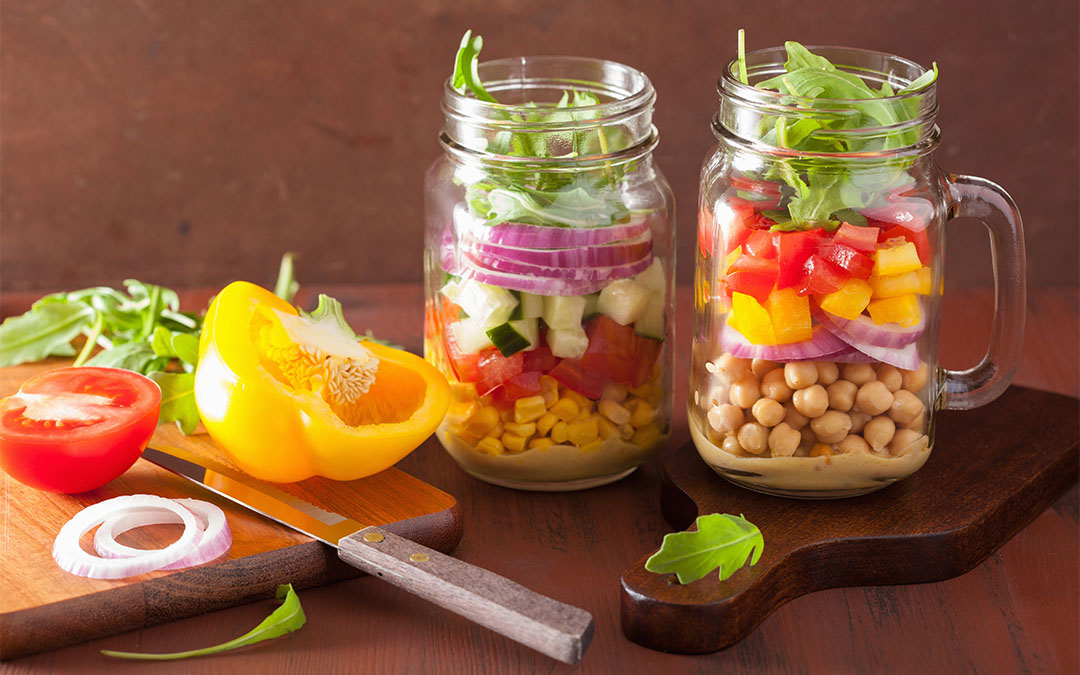
Mason Jar Salad
To keep your salad fresh and crisp, make sure you layer your ingredients properly! Here’s the order to follow:
- Dressing – always goes at the bottom.
- Grains and proteins – grains (like quinoa, rice, farro), proteins (like chickpeas, edamame, chicken) and anything else large and chunky should go next. This layer helps keep the dressing separate from all the other top layers.
- Everything else except leafy greens – all the veggies, cheese, eggs.
- Leafy greens – kale, spinach, lettuce and any fresh herbs you want.
If stored properly, most mason jar recipes can last four to five days in the fridge.
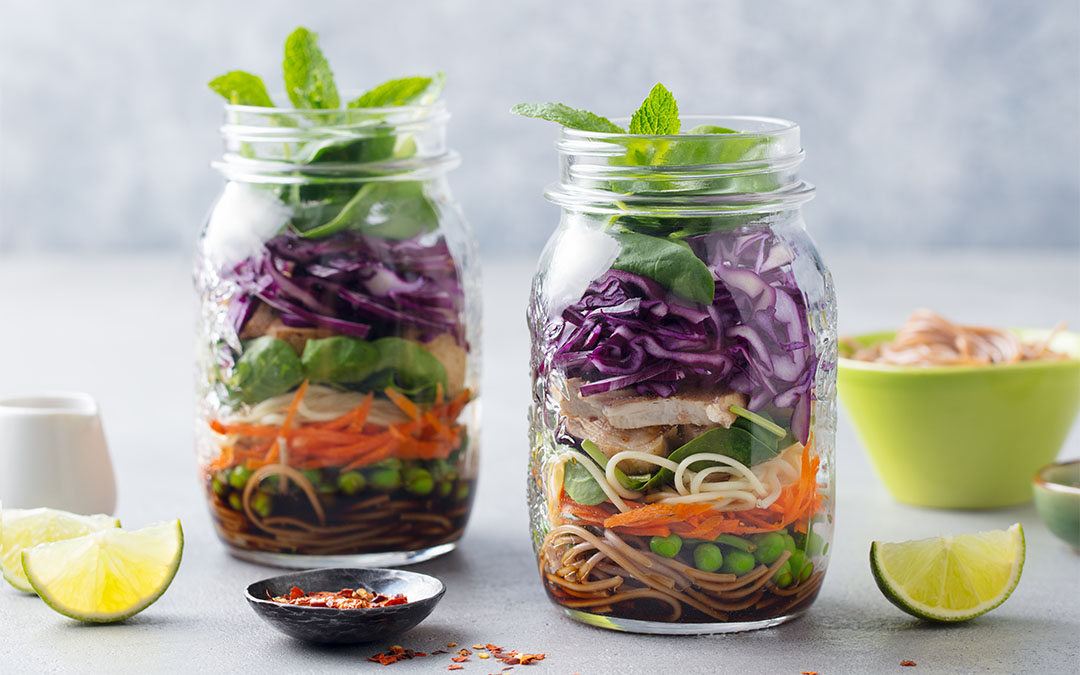
Mason Jar Noodle Pot
The gist of this warming soup is noodles, veggies, protein, herbs and spices in a jar. You can store them in the fridge until you’re ready to eat, then simply pour hot water over the mixture, stir and enjoy! Here is the easy to follow order:
- Flavor base – add 1-2 tablespoons (soup stock paste, miso paste, curry paste).
- Extra flavor – add 2-3 tablespoons (chili garlic sauce, soy sauce, tamari, fresh ginger, turmeric, garlic).
- Veggies and protein – ¼ – ½ cup (carrots, corn, peas, tofu, shredded chicken, mushrooms, cabbage, greens).
- Noodles – 1 cup (cooked udon, soba, spaghetti, rice, vermicelli or ramen noodles).
- Fresh ingredients – ¼ – ½ cup (fresh cilantro, parsley, basil, sliced green onions, bean sprouts, sliced lemon or lime)
Q.What are the most common items that can be easily re purposed in the home?
A. There are so many household items that can be recycled or re purposed into reusable options rather than trashing them. You just have to be a little creative and inventive!
Recycling old towels is one of the easiest ways to reduce waste and make reusable household products. Simply cut them into smaller sizes and use them as cleaning rags and dish towels. They are incredibly absorbent and make cleaning mirrors and glass surfaces quick and easy. Old towels can also be used as packing materials for moving or wrapping Christmas decorations for storage. Sheets and linens are another awesome option! They are lightweight and can be used for beach days, picnics or outdoor tablecloths.
Sheets make great drop cloths or draped as smocks for painting and DIY craft sessions with your kids. You can cut sheets and linens into smaller sizes and use them as gift wrap or sew them into cloth napkins. If all else fails, old towels and linens can be donated to local animal shelters or thrift stores.
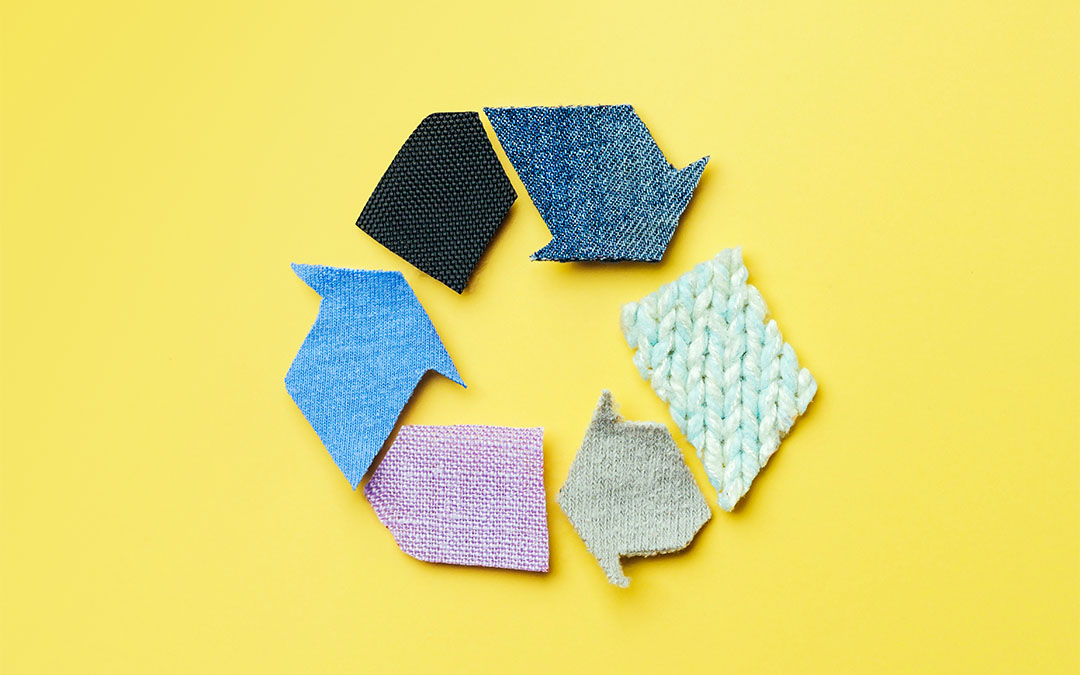
Q. What if you can’t sew?
A. You don’t necessarily need to know how to sew to make your own reusable products. As long as you don’t mind frayed edges, you can simply cut towels, linens and fabric into the shapes and sizes particular to your project (i.e. cleaning rags, eye makeup remover pads). Pinking shears are an inexpensive way to reduce the fraying edges and can be easily purchased at a fabric or craft store.
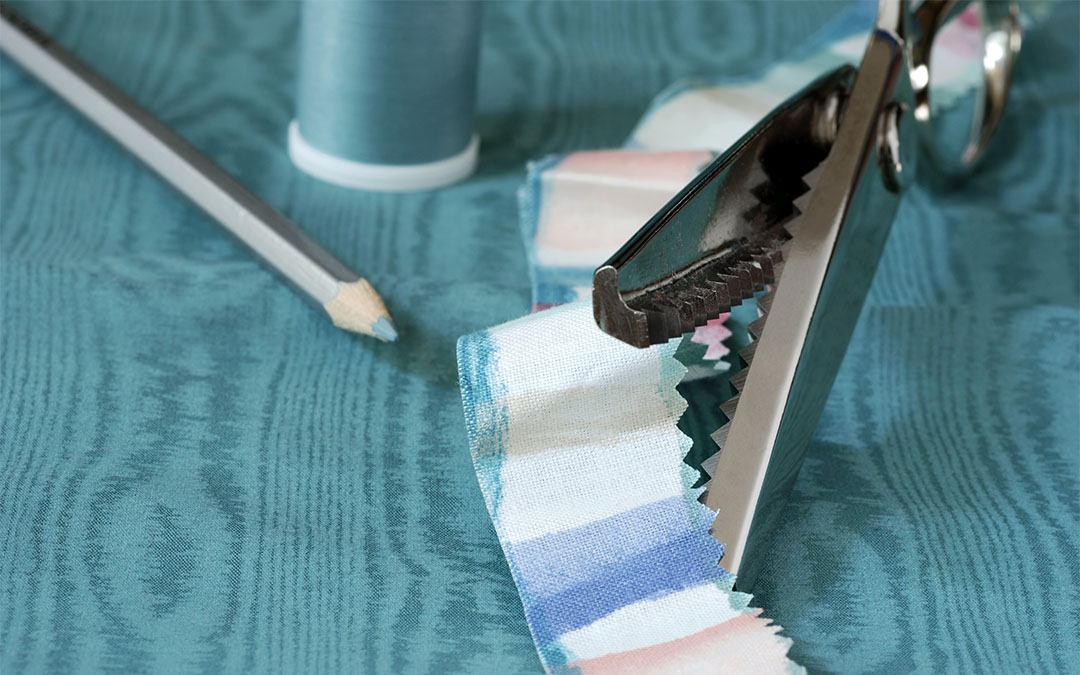
Q. Where can you purchase these items if needed?
A. As the zero waste and low impact lifestyle movements become more mainstream, lots of reusable items can be found at farmers markets, local shops and second-hand stores and online!
You can follow along with Fork.Moon.Life on Instagram and Facebook @fork.moon.life for some great recipes And advice on how to be more sustainable and reduce your use of plastic.
Remember, any changes you make will make a big difference. Give some a try and let me know how it goes.

